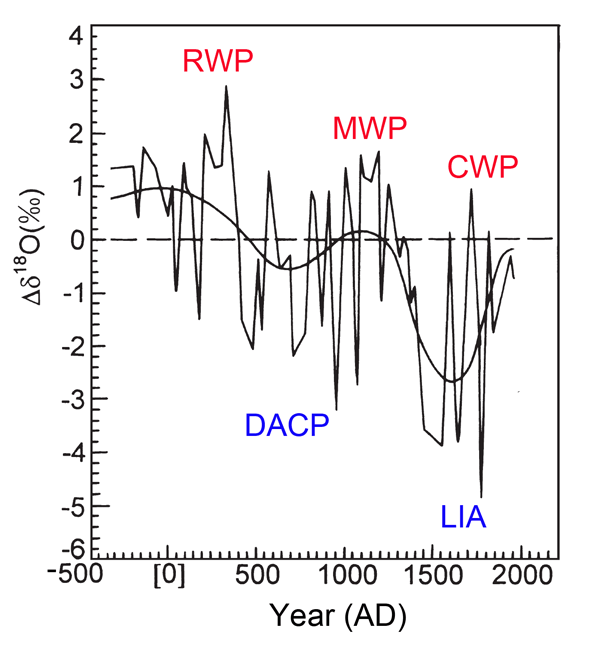Jinchuan Peat Marsh, Huinan County, Jilin Province, China
Reference
Hong, Y.T., Jiang, H.B., Liu, T.S., Zhou, L.P., Beer, J., Li, H.E., Leng, X.T., Hong, B. and Qin, X.G. 2000. Response of climate to solar forcing recorded in a 6000-year δ18O time-series of Chinese peat cellulose. The Holocene 10: 1-7.
The peat cellulose δ18O data of Hong et al. plotted as anomalies relative to the mean of the entire 6000-year record, where the smoothed line is a 15-order polynomial function they fit to the data. Adapted from Hong et al. (2000).
Reference
Hong, Y.T., Jiang, H.B., Liu, T.S., Zhou, L.P., Beer, J., Li, H.E., Leng, X.T., Hong, B. and Qin, X.G. 2000. Response of climate to solar forcing recorded in a 6000-year δ18O time-series of Chinese peat cellulose. The Holocene 10: 1-7.
Description
Working with cores extracted from a peat bog west of Jinchuan Town, Huinan County, Jilin Province, China (42°20'N, 126°22'E), the authors developed "a 6000-year high-resolution δ18O record of peat plant cellulose," which they interpret as "reflecting changes in regional surface air temperature." And from their results, which are depicted in the figure below, it can be seen that the Medieval Warm Period (which was preceded by the Dark Ages Cold Period and followed by the Little Ice Age) was considerably warmer than the Current Warm Period (which followed the Little Ice Age) has been to date. MWP: AD 800-1300; MWP > CWP.

The peat cellulose δ18O data of Hong et al. plotted as anomalies relative to the mean of the entire 6000-year record, where the smoothed line is a 15-order polynomial function they fit to the data. Adapted from Hong et al. (2000).




